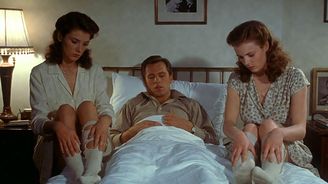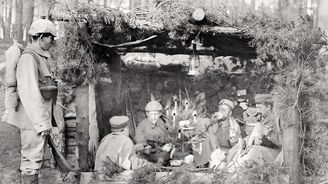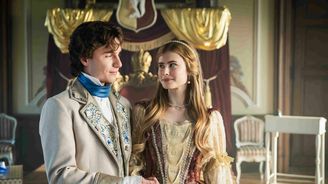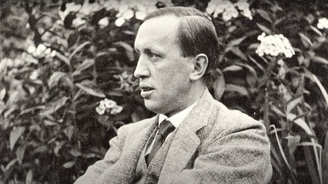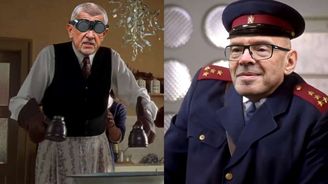The Furniture Castle
It was mid-afternoon when K. arrived. The parking lot was nearly full. K. circled the lot for a long time before finally finding an empty space several hundred yards from the Furniture Castle's entrance.
He had traveled to the Furniture Castle upon the orders his superior, Mrs. K., who had instructed him to purchase a new coffee table, the exact model of which she had selected from its on-line catalogue.
When he had asked her why she did not purchase the table directly on-line, she explained to him that the Furniture Castle did not allow on-line purchases. "You have to go there yourself and buy it," she told him. "That is the Furniture Castle's policy, and you are just wasting time by asking such questions. Here is the name of the table. It is called a VITTSJÖ. And do not waste more time wondering what that name means. It is a Swedish word. Perhaps it has some meaning in our language, but you do not need to know it. Just go there and purchase it."
K. was a loyal servant, and he knew better than to question Mrs. K's directives in her presence. Thus, it was not until he was out of her sight that he used his phone to Google translate the word VITTSJÖ, only to find that the translation provided for his own language was "VITTSJÖ."
This translation evoked in K. a confusing mixture of amusement and frustration. He was still trying to put those conflicting feelings out of his mind as he crossed the Furniture Castle's vast parking lot and approached its entrance door.
The door was of the revolving type, with large panes of glass and some manner of automated activation. As the door revolved, K. waited for an opening large enough to accommodate him without the risk of his being crushed to death, an outcome which would surely have disappointed but probably not surprised Mrs. K., who was quite used to his failures in fulfilling her wishes.
When he finally stepped into the revolving doors, they suddenly stopped, and K.'s mind was instantly overcome with claustrophobic feelings of terror at the thought of being trapped for eternity within their pneumatic enclosure. "How typical," he could hear Mrs. K. saying as they delivered his starved and asphyxiated remains to their home instead of the coffee table she was expecting.
But, after only a couple of seconds, the doors once again began to move, rescuing K. from his imprisonment and propelling him into the Furniture Castle's vast and imposing entrance lobby.
He was immediately paralyzed with indecision as to which direction he should turn in order to reach the area where the coffee table he sought might be located.
A posted map of the Furniture Castle indicated that its "Living Room" section could be reached by going to the left, but also to the right as well! K. was confounded. As he studied the map, the route to the left appeared at first glance to be the most expeditious. But then K. noticed what was marked as a "short cut" on the route to the right. After much anxious deliberation, K. at last chose to take the route to the right.
There is no record as to exactly how long K. wandered through the Furniture Castle's labyrinthine recesses in his desperate search for that short cut to its "Living Room" area. To K. himself it seemed like days, but more likely it was only 15 or 20 minutes.
He was nearly delusional as he found himself passing through the "Bathroom" area yet again, but still he kept walking. In his tormented mind, he began to obsess about the fake television sets displayed throughout the Furniture Castle. He thought about the Chinese factory workers whose job it was to assemble thousands of these non-working televisions. What did they think about the purpose of their job? How did they explain to their families and friends what they did for a living? "I make fake televisions. Perhaps they are for people in the west who cannot afford a real television."
It was then that K. realized that he was at last in the Furniture Castle's "Living Room" area. The fake television sets were everywhere, set upon all manner of tables, which to K. in his delirium now looked only slightly less fake than the televisions.
K. approached a woman dressed in a blouse of an almost blinding yellow color. It reminded K. of the sunflowers which Van Gogh had painted in the meadows of Arles during his period of greatest insanity. Shielding his eyes with his hand, K. faced the yellow woman and told her that he wished to purchase the coffee table known by the untranslatable name of VITTSJÖ.
"Come with me," the woman said. K. followed her, and as he did so, he suddenly felt as if he were walking behind an enormous lemon. "Here it is," K. heard the lemon say, as it pointed at a coffee table which bore the VITTSJÖ name on its tag.
"Thank you," said K. "I wish to have it delivered to my home. Here is my credit card and my address."
K. watched as the giant citrus shook its head and said, "You must go downstairs to where the furniture is located, then take it to the cash register and pay, and then take it to our delivery office."
"Excuse me, large and sour fruit-like person, but do you mean that you cannot just deliver the VITTSJÖ to me? I must first pick up the VITTSJÖ myself and then deliver it to you in order for you to then deliver it to me?"
"That is the Furniture Castle's policy, and you are just wasting time by asking such questions," was the last thing K. heard the giant lemon say before he passed out, although it might really have been the imagined voice of Mrs. K. chastising him in his deranged unconsciousness.


